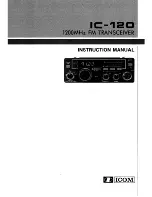
NEO-M9N - Integration manual
•
Tracking
state: The receiver continuously tracks and downloads data. Less power consumption
than in
Acquisition
state.
•
POT
state: The receiver repeatedly loops through a sequence of tracking (Track), calculating the
position fix (Fix), and entering an idle period (Idle). No new signals are acquired and no data is
downloaded. Much less power consumption than in
Tracking
state.
The following figure illustrates the PSM state machine:
Figure 18: State machine
3.11.2.1.1 Acquisition timeout logic
The receiver has internal, external and user-configurable mechanisms that determine the time
to be spent in acquisition state. This logic is put in place to ensure good performance and low
power consumption in different environments and scenarios. This collective logic is referred to as
Acquisition timeout.
Internal mechanisms:
• If the receiver is able to acquire weak signals but not of the quality needed to get a fix, it will
transition to
(Inactive) awaiting next search
state after the timeout configured in
MAXACQTIME
or earlier if too few signals are acquired.
• If the receiver is unable to acquire any signals or it acquires a small number of extremely bad
signals (e.g., no sky view), it will transition to
(Inactive) awaiting next search
state after 15
seconds or the timeout configured in
MAXACQTIME
if shorter.
User-configurable mechanisms:
•
MINACQTIME
is the minimum time that the receiver will spend in
Acquisition
state (see
for details.)
•
MAXACQTIME
is the maximum time that the receiver will spend in
Acquisition
state (see
for details).
•
DONOTENTEROFF
forces the receiver to stay awake and in
Acquisition
state even when a fix is
not possible (see
for details).
External mechanisms:
UBX-19014286 - R07
3 Receiver functionality
Page 44 of 95
C1-Public
















































